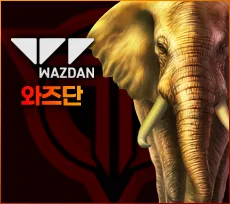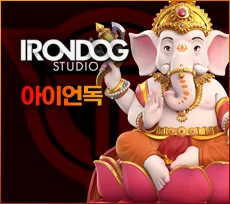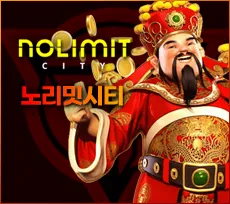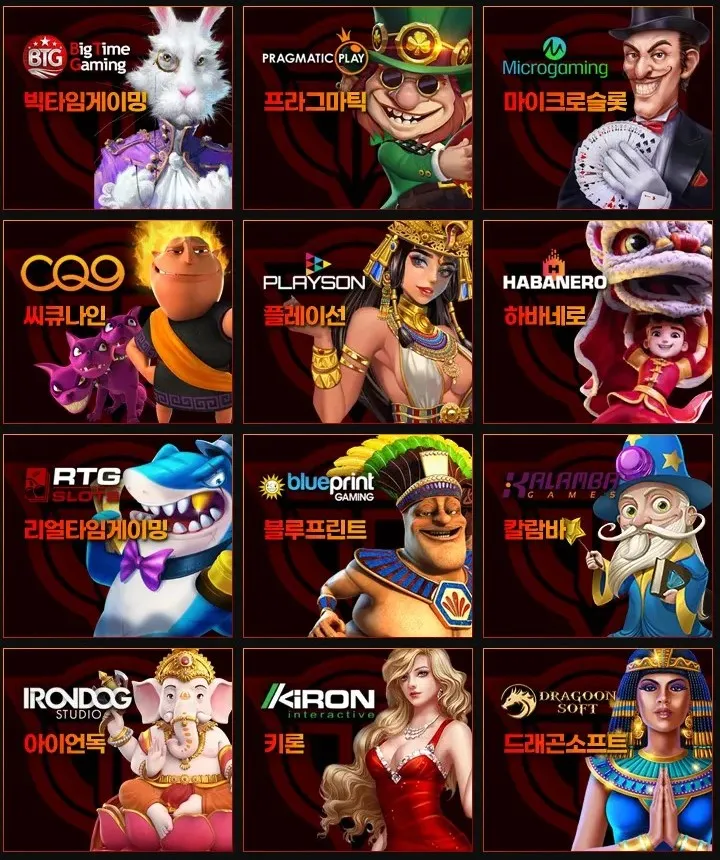투데이슬롯 사이트 추천
투데이슬롯의 세계에서 큰 상과 스릴이 당신을 기다리고 있습니다, 여기를 환영합니다! 릴의 회전 소리와 승리를 향한 기대가 이 세계를 가득 채우며, 이곳은 평범한 게임과는 다른 차원의 경험을 제공합니다. 매혹적인 그래픽, 스마트한 인터페이스, 그리고 창의적인 특징들로 이루어진 이 게임은 타의 추종을 불허하는 모험을 당신에게 선사할 것입니다.
투데이슬롯의 세계에서 큰 상과 스릴이 당신을 기다리고 있습니다, 여기를 환영합니다! 릴의 회전 소리와 승리를 향한 기대가 이 세계를 가득 채우며, 이곳은 평범한 게임과는 다른 차원의 경험을 제공합니다. 매혹적인 그래픽, 스마트한 인터페이스, 그리고 창의적인 특징들로 이루어진 이 게임은 타의 추종을 불허하는 모험을 당신에게 선사할 것입니다.

투데이슬롯 게임 그렇게 유명할까요, 하지만 왜 그럴까요?
투데이슬롯의 기사는 슬롯 머신의 인기가 어떻게 상승했는지와 이 게임의 장단점에 대해 다룹니다. 이 글에서는 카지노 게임 플레이어들 사이에서 슬롯의 인기와 투데이슬롯 온라인에서 접할 수 있는 슬롯 게임의 다양한 유형을 설명합니다. - 슬롯 게임은 현재 온라인 슬롯의 쉬운 접근과 인터넷 게임의 인기 증가로 인해 대중적인 사랑을 받고 있습니다. 게임 스트리밍 기술의 발전으로 온라인 슬롯은 국제적인 엔터테인먼트 수단으로 부상했습니다. 오랜 기간 동안 존재한 게임 엔터테인먼트는 최근에 가장 사랑받는 엔터테인먼트 형태 중 하나로 인식되고 있습니다.
19세기 후반부터 시작된 슬롯머신은 현재 대형 카지노의 주요 관광지로서 점점 인기를 쌓아가고 있습니다. 진보적인 잭팟의 도입은 플레이어들에게 생활을 전환할 수 있는 금액을 딸 수 있는 기회를 제공함으로써, 투데이슬롯의 게임 환경에 혁명을 가져왔습니다. IGT의 메가벅스가 최초로 진보적인 슬롯머신을 도입한 이후로, 다수의 온라인 카지노가 자신들의 게임에서 진보적인 잭팟을 제공하고 있습니다.
현대의 슬롯 게임은 매력적인 게임 플레이, 클래식한 슬롯 머신 디자인, 쉬운 게임 방식, 그리고 투데이슬롯 신규 플레이어들에게 권장되는 선택으로 큰 명성을 얻고 있습니다. 플레이어를 끌어들이는 그래픽과 몰입형 오디오는 게임을 더욱 매력적으로 만들어줍니다. 이 게임들은 최신 기술로 구현된 생생한 그래픽으로 모든 유형의 플레이어를 매혹시키며, 간단한 룰과 낮은 시작 금액으로 온라인 슬롯 입문자에게 이상적입니다.
투데이슬롯 무료, 당신이 알아야 할 것들
오늘날 슬롯 게임은 카지노 게임을 넓게 제공하는 것으로 명성이 높지만, 특별히 어떤 게임을 제공하지는 않습니다. 다수의 카지노는 플레이어들이 인기 있는 슬롯 게임을 선택하고 최고의 수익을 얻기 위한 슬롯 머신을 고를 수 있도록 도와주는 전략을 제공합니다. 카지노 슬롯 부문에서는 플레이어들이 잭팟 달성을 위해 상당한 시간을 할애해야 하는 프로그레시브 슬롯 게임에서 높은 지불금이 주로 나옵니다. 초보자들에게 복잡한 게임 전략을 고민하지 않아도 되는 보너스 라운드와 브랜드 슬롯 같은 요소들이 매력적으로 작용합니다.
슬롯 게임은 현재 온라인에서의 재미와 편리함으로 인해 큰 인기를 얻고 있습니다. 25개 이상의 다양한 슬롯을 제공하는 온라인 카지노 플랫폼 덕분에 모든 사용자는 자신에게 맞는 게임을 찾을 수 있습니다. 온라인 카지노에서 슬롯의 지불률은 육상 카지노보다 통상 높으며, 이는 플레이어에게 더 높은 안전성을 제공합니다. 보너스 라운드와 다양한 주제, 그래픽을 포함하는 슬롯 게임은 많은 이용자들에게 사랑받고 있으며, PA의 최고 온라인 카지노 플랫폼은 높은 지불률을 가진 광범위한 슬롯 게임을 모바일과 컴퓨터에서 제공합니다.
오늘날 슬롯 게임은 경제적인 가격에도 플레이어들에게 수익을 창출할 수 있는 효과적인 방법을 제공하여 인기를 얻고 있습니다. 온라인 슬롯 머신에서는 사용자가 집에서 쉽게 즐길 수 있는 종료 보너스 게임 스핀과 추가 스핀을 제공합니다. 블랙잭, 룰렛, 바카라와 같은 다른 카지노 게임을 통해 온라인 카지노에서 슬롯뿐 아니라 더 많은 수익을 얻을 수 있습니다. 최소 보증금 없이 스핀을 제공하는 플랫폼은 플레이어들에게 소액으로도 실제 돈을 벌 수 있는 매력적인 기회를 제공합니다.

투데이 슬롯 게임 소프트웨어 제공 업체
결국, 이 게임은 플레이어들에게 매우 흥미로운 경험을 제공하며, 그들의 관심을 사로잡고 더 많은 것을 원하게 만듭니다. 유혹적인 큰 상과 무한한 스릴을 제공하는 이 온라인 플랫폼은 전 세계의 슬롯 애호가들에게 최적의 목적지로 각광받고 있습니다. 투데이슬롯의 가상 세계에 첫 발을 내딛는 순간부터, 당신은 잊을 수 없는 모험의 시작을 알리는 생동감 넘치고 사용자 친화적인 인터페이스를 경험하게 됩니다.
다채로운 게임 선택권은 클래식 슬롯부터 현대적인 디자인의 슬롯까지 모든 사용자의 기호에 부합합니다. 이외에도, 안전하고 보호받는 환경을 플레이어에게 제공하는 것에 큰 자부심을 느끼며, 엄격한 보안은 개인 정보의 안전을 보장합니다. 더 기다릴 이유가 없습니다. 투데이슬롯과 함께하는 게임 여정으로 독특한 흥미의 세계를 탐험하세요.
















투데이슬롯 먹튀 메카닉스
도박 소식 사이트를 통해 최신 슬롯 게임에 대해 알아보는 것은 훌륭한 방법입니다. 플레이어는 카지노의 슬롯머신이나 온라인을 통해 실제 돈으로 게임을 할 수 있으며, 카지노는 공정한 게임을 위해 검증된 난수 생성기를 사용합니다. 이 기술은 각 게임의 결과가 무작위로 결정되도록 하며, 컴퓨터는 카지노에 당첨된 슬롯 기호를 알려줍니다. 난수 생성기는 게임이 공정하게 진행됨을 보장하고 카지노에 의한 조작 가능성을 없앱니다.
슬롯 게임은 현재 온라인 카지노 게임 중에서 상당한 인기를 끌고 있으며, 여러 인기 있는 온라인 카지노 사이트에서 다양한 슬롯 게임을 제공하고 있습니다. 플레이어들은 이 게임들이 제공하는 사용상의 편리함과 소프트웨어 기반 메커니즘의 쉬운 이해로 인해 매력을 느끼고 있습니다. 육상 카지노도 기술 발전의 이점을 누리고 있지만, 슬롯 게임에서는 온라인 카지노의 대항마가 되지 못합니다. 이 내용은 제가 표현하고자 하는 견해입니다.
현재 슬롯 게임의 인기는 대단하지만, 그 이유는 무엇일까요? 도박꾼들 사이에서 오랫동안 큰 인기를 끌어온 슬롯은 1990년대 온라인 슬롯의 등장으로 그 매력이 더욱 커졌습니다. 기술의 발전과 함께 슬롯 게임 역시 진화하여 현대적인 비디오 포커 기계로 발전했습니다. 온라인 슬롯에 대한 상상은 플레이어들이 새로운 게임 형식을 탐색하게 되면서 현실화되었고, 1970년대와 1980년대에는 포커와 슬롯의 새로운 버전을 즐기기 시작했습니다.
오늘날 카지노에서 슬롯머신은 가장 사랑받는 게임이며, 그 중에서도 비디오 포커는 특히 인기가 높습니다. 도박을 즐기는 사람들은 다른 어떤 게임보다도 슬롯 게임에서 더 큰 수익 기회를 볼 수 있기 때문에 슬롯을 더욱 선호합니다. 이는 슬롯 게임의 인기를 크게 끌어올렸습니다. 사실상, 도박꾼의 71%가 포커 등 다른 카지노 게임들보다 슬롯머신을 선호한다고 합니다. 온라인 카지노의 출현으로 슬롯 게임은 더블 보너스 및 더블 보너스 포커와 같은 온라인 버전을 통해 인기를 더욱 확장하였습니다.

투데이슬롯 사이트 주요한 전략들이
투데이슬롯 게임을 하면서 큰 상금과 지속적인 스릴을 느낄 수 있는 흥미진진한 활동이며, 대박을 터뜨릴 수 있는 기회를 최대화하기 위한 몇 가지 주요 전략을 기억하는 것이 중요합니다.
- 게임에 대한 이해: 게임의 규칙, 지불선, 그리고 기호에 대해 잘 알아두세요. 이러한 정보는 게임을 진행하면서 올바른 결정을 하는 데 큰 도움이 됩니다.
- 예산 수립: 게임을 시작하기 앞서, 여러분이 안전하게 사용할 수 있는 예산을 결정하세요. 책임 있는 도박 문화를 위해 이 예산을 엄수하는 것이 필수적입니다.
- 합당한 베팅 설정: 여러분의 예산과 원하는 위험 수준을 고려하여 베팅 크기를 결정하세요. 큰 베팅은 더 많은 보상을 가능하게 하지만, 더 큰 위험도 부담해야 합니다.
- 특별 기능 이용하기: 투데이슬롯이 제공하는 야생 기호, 산란 기호, 그리고 보너스 라운드와 같은 특수 기능을 적극적으로 활용하세요. 이러한 기능들은 대승을 거둘 수 있는 가능성을 상당히 증가시킵니다.
전례 없는 흥분과 즐거움의 세계로 오십시오! 여러분의 집에서 최첨단 기술과 흥미로운 게임 플레이가 어우러진 게임 여정을 경험할 준비를 하세요. 이것은 스릴 넘치는 순간, 대규모 상품, 그리고 끊임없는 즐거움을 찾는 이들에게 완벽한 선택입니다. 각 스핀은 여러분을 짜릿한 모험의 세계로 이끄는 관문입니다.
투데이슬롯 게임 메이저 및 마이너 상
온라인 슬롯 게임은 언제든지 집에서 즐길 수 있는 재미와 사실적인 경험을 제공합니다. 클래식한 우주 전쟁에서 현대적인 라스베가스 테마까지, 다양한 스타일의 게임이 있으며, 보너스와 프리 스핀 같은 특별 기능을 제공하는 게임도 많습니다. 이런 다양성은 모험을 추구하는 숙련된 플레이어나 집에서 클래식 슬롯을 즐기길 원하는 사람들에게 적합합니다.
아시아를 배경으로 한 슬롯 게임에서 플레이어는 스릴 넘치는 게임과 큰 승리의 기회를 동시에 즐길 수 있습니다. 이 슬롯들은 플레이어에게 맞춤형 기능과 보너스를 제공하여 게임 스타일을 쉽게 이해할 수 있게 하며, 큰 승리를 거둘 수 있는 기회와 추가 게임을 탐험할 수 있는 기회도 제공합니다. 또한, 스포츠 테마를 포함한 다양한 게임 옵션이 있어 플레이어는 더 높은 우승 확률과 빠른 게임 플레이를 경험할 수 있습니다. 이와 같은 다양한 매력 때문에 아시아 테마 슬롯은 온라인 게이머들에게 인기가 높습니다.

투데이슬롯 자주 묻는 질문
투데이슬롯 무슨 시간입니까?
비록 투데이슬롯이 많은 카지노 게임을 보유하고 있음으로써 유명세를 얻었지만, 실제로 게임을 제공하는 것은 아닙니다. 대신, 여러 카지노가 다양한 인기 슬롯 게임과 최고의 수익을 낼 수 있는 슬롯 머신 선택 전략을 제공합니다.
투데이슬롯에서 어떻게 이길까요?
이 특별한 기능은 플레이어에게 승리의 기회를 증가시키고 게임 속도를 높여주며, 기존 슬롯과는 전혀 다른 새로운 경험을 제공합니다.
투데이슬롯는 안전한가요?
그렇게 됩니다. 암호화 및 보안 프로토콜을 통해 플레이어는 안전하게 보호됩니다. 이와 더불어, 플레이어의 개인 정보 보호는 최상급 보안으로 이루어집니다.



